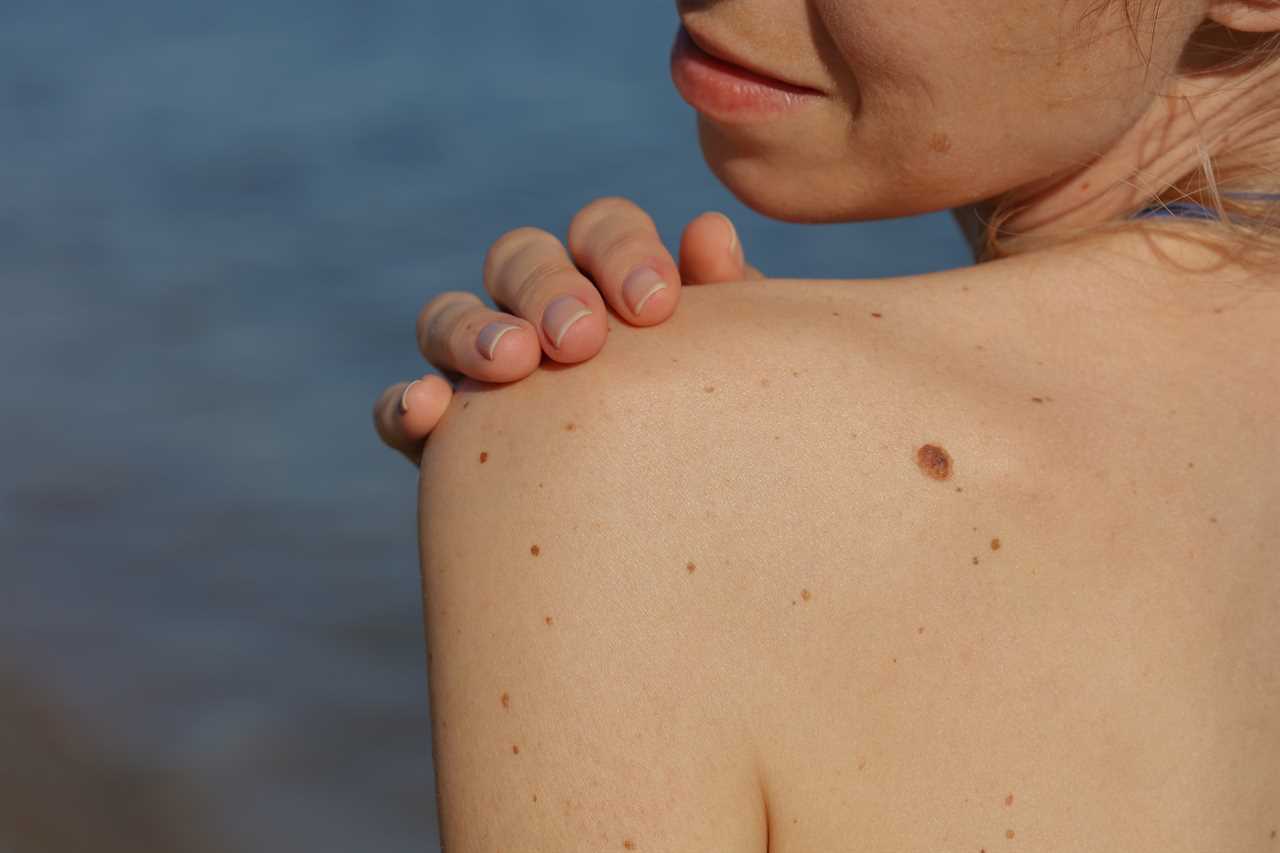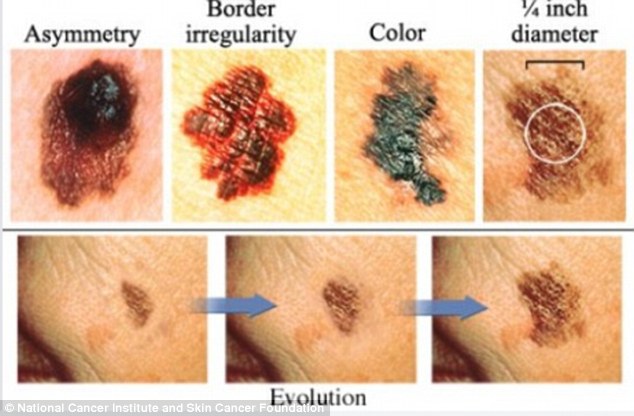YOU might not devote much time to checking your skin for signs of skin cancer, but Cancer Research UK says there are around 16,700 new melanoma skin cancer cases in the UK every year.
In fact, it’s the fifth most common cancer in the UK.

Regularly checking your moles mean you’ll be alert to any changes in shape, size and colour, which could indicate melanoma

Look out for the ABCs when it comes to checking molesCredit: National Cancer Institute and Skin Cancer Foundation
Although there are other risk factors, it is ultraviolet (UV) radiation from the sun or sunbeds that are the main factor increasing our risk of melanoma – 90 per cent of melanomas are due to overexposure of UV.
Laura Harker is a screening nurse at The MOLE Clinic.
She says melanoma skin cancer is the most serious form of skin cancer while non-melanoma skin cancer is more common and usually takes the form of Basal Cell Carcinoma (BCC) or Squamous Cell Carcinoma (SCC).
The stats around melanoma skin cancer are scary, but if caught early, it can be treated.
However, it’s important to stay vigilant and keep tabs on your skin.
“The skin is all external and it’s something you can check yourself. It’s not like a smear or a prostate check,” says Laura.
Laura recommends that everyone gives themselves a thorough check once every three months.
For harder to reach areas such as your back, try taking photographs or getting a loved one to, which can help with comparison.
At The MOLE Clinic, Laura uses a dermoscope which magnifies by ten and looks underneath the skin to see the different features of moles and lesions.
When checking your skin – specifically moles – this is what Laura suggests to look out for…
Follow the ugly duckling rule
If a mole stands out, or looks different from your other moles, then get it checked out.
“It’s about knowing what is the baseline for you,” says Laura.
“Some people have multiple large moles, but that might be normal for them.
“But anything that stands out as different to that, should be checked.”
She says the mole that’s solitary in appearance – known as the ‘ugly duckling’ – is the one to look out for.
Don’t forget your hairline
“The hairline and parting should be checked,” says Laura, although it is rare to get anything suspect on the scalp.
She recommends wearing a wide brimmed when out in the sun. Runner? Wear a cap when running on hot, sunny days.
Other less obvious areas to check include behind the ears, on the soles of feet and under arms.
Look for uniformity
Laura says that ‘healthy’ moles will show uniformity, in that they will have a similar colour to other moles and the whole mole will be one colour.
They will have smooth round edges – no jagged borders – and both sides of the mole will match.
She recommends keeping tabs on the size, shape and colour of your moles, and to check for any changes.
Keep and eye on old AND new moles
Almost everyone has moles and some are on our skin from the moment we’re born.
Most of the moles on our skin will develop during childhood and early adulthood; the number of moles that develop is often hereditary.
Too much sun exposure as a child can also influence the number of moles.
Laura says the moles we develop as children are more long standing and “don’t usually cause any issues”.
“They can get bigger over time; this is quite normal,” she says.
“You can expect new moles until around the age of 35 to 40; after that you shouldn’t really see new moles developing.
“It’s the moles that appear later on in life that require you to be more vigilant.
“If you noticed a new mole now, increasing in size and becoming elevated, it would be something to check.”
Melanoma’s can happen underneath nails
Skin cancer can develop in the most obscure places, including under nails.
Melanoma will have a specific look about it if it does develop under the nail.
“Melanoma will always be from the base of the nail upwards. And it won’t grow out,” says Laura.
If you’ve ever bruised your toe, over time it will grow out, but melanoma doesn’t.
Check gender-specific areas
Although anyone can get skin cancer, Laura says the legs tend to be high risk areas for women, while the back tends to be a high risk area for men.
“This is due to overexposure of those areas.”
Get an eye test
A lot can be discovered through an eye test.
Not only are opticians checking your vision, but they can see inside the eyes for moles, sun damage and melanomas.
Be sure to stay on top of eye appointments.
All skin colours are at risk
‘No-one is invincible,” says Laura. “While the risk of melanoma is lower in black skin, the prognosis is poorer.”
This is because it’s normally caught later.
Watch for non healing spots
Got a spot or pimple that’s been lingering for more than three months? It’s time to get it seen.
“Non healing spots and sores represent the most common type of skin cancer,” says Laura.
Other signs to look out for include bleeding spontaneously, scabbing, or if your spot gradually gets bigger over time.
“The spots could look like cystic acne – quite big and inflamed. It might look like a pink patch on the skin and it might be scaly,” adds Laura.
“It might be a bit like an ulcer with a yellow centre and firm to touch. It might weep a little bit and feel tender.”






